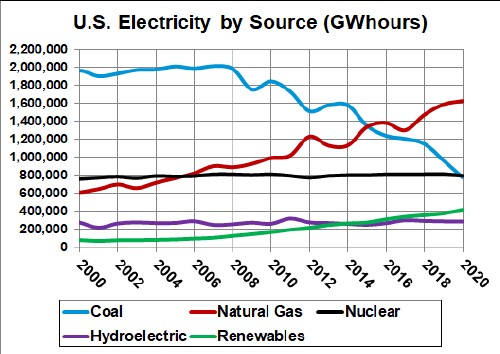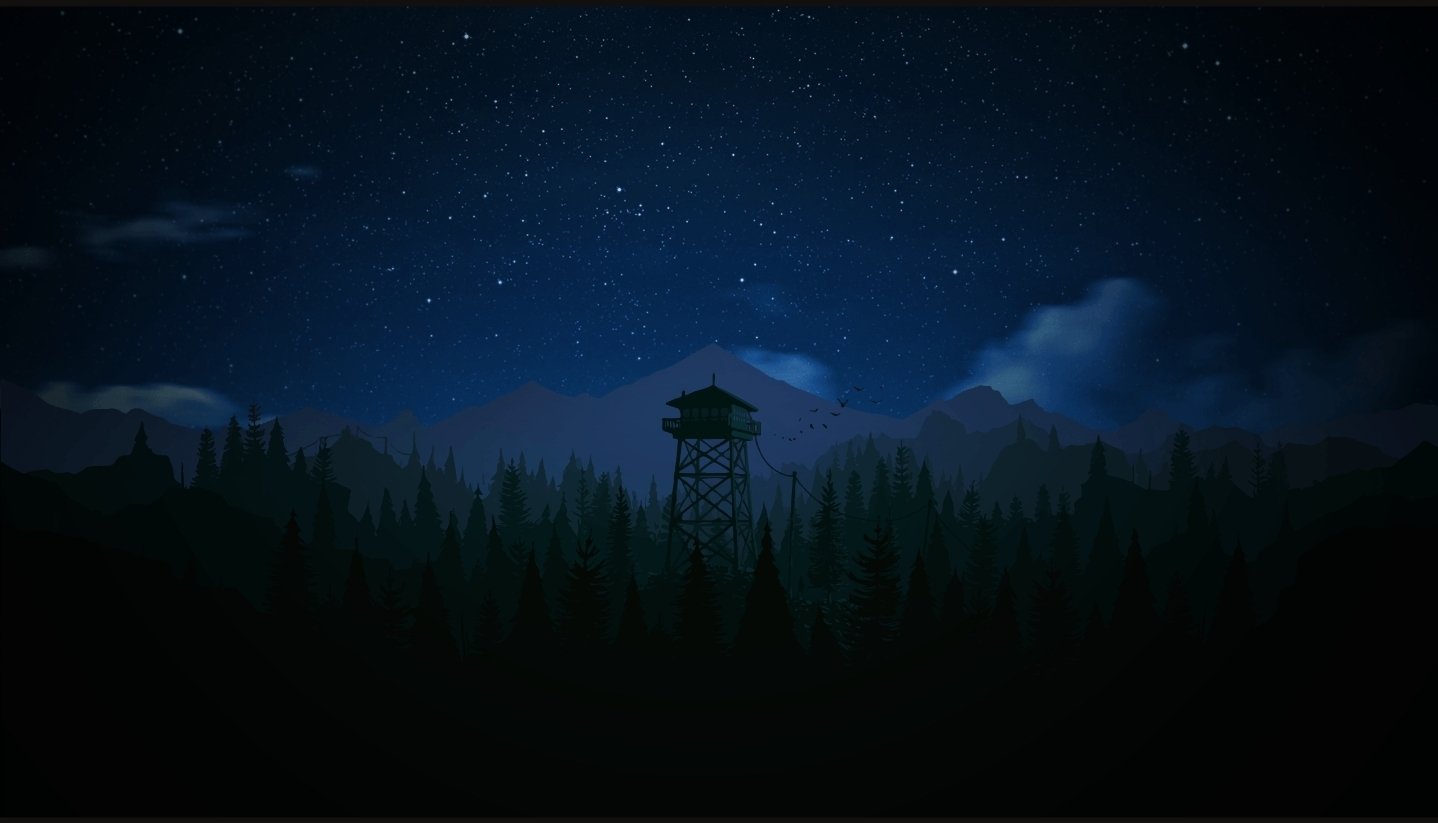- cross-posted to:
- science@lemmy.world
- cross-posted to:
- science@lemmy.world
It is cheaper to operate and that has been it’s selling point for the last years.
In case you’re ever wondering, this is an example of your tax dollars at work. Thirty years ago solar and wind generation had to be heavily subsidized with government grants to make them viable in the energy market. Now the technology of both has advanced to the point that it’s undercutting all of the other forms of electricity generation, without subsidization.
Government subsidies work. They’re effective for getting new technologies off the ground.
Good thing we still subsidize petroleum
Good for the oil companies and legislators they own, anyway
Don’t forget the retirees that rely on the stock prices dividend payouts in their 401ks.
Those IRAs and 401ks that are the only alternative after states and corps plundered all the pension systems to buy those politicians.
They are great. As long as they don’t end up like corn.
Or oil and coal, propping up bad energy sources while the clean ones have to often fend for themselves and compete against the subsidies.
Or oil and corn and meat and dairy.
The four elements of power.
They do get subsidized pretty well, which is a good thing in my book.
Not as much as it needs to to compete fairly with the $7 trillion for fossil fuels. The fact they still can compete is great though. It shows how dead fossil fuels should be even if it was just left up to capitalistic mechanisms. Sadly the government interferes in the market in a bad way often for this.
Solar PV tortillas taste awful and hurt my teeth.
Everything I find shows them as still being subsidized and receiving the lions share of energy subsidies, which is fine in my book.
Everything I find shows them as still being subsidized and receiving the lions share of energy subsidies
According to Senator Sheldon Whitehouse, the bulk of our state and federal subsidies are tilted towards fossil fuels.
As we’ll hear today, the United States subsidizes the fossil fuel industry with taxpayer dollars. It’s not just the US: according to the International Energy Agency, fossil fuel handouts hit a global high of $1 trillion in 2022 – the same year Big Oil pulled in a record $4 trillion of income.
In the United States, by some estimates taxpayers pay about $20 billion dollars every year to the fossil fuel industry. What do we get for that? Economists generally agree: not much. To quote conservative economist Gib Metcalf: these subsidies offer “little if any benefit in the form of oil patch jobs, lower prices at the pump, or increased energy security for the country.” The cash subsidy is both big and wrong.
It should be noted that your link only explores federal subsidies, while Whitehouse notes the bulk of subsidization that happen at the state and local level. Texas, for instance, invests enormously in public works that benefit fossil fuel producers while offering the administrative offices generous grants and tax forbearances to operate within the state.
Because energy consumption underpins the bulk of our commercial activities, there is a real net-benefit to keeping raw fuel and electricity prices artificially low. Market rate energy would constrict capital construction and real estate development, reduce employment rates, and increase inflation - generally speaking, it would cut into long term economic growth. The OPEC embargo of the 70s demonstrated as much.
At the same time, fossil fuel consumption yields a host of side-effects - degradation of air and water quality, rising global temperatures leading to more sever weather and sea levels which increase the rate of coastal erosion, wholesale destruction of agricultural land and waterways where spills occur, etc.
So subsidies aren’t bad on their face, but fossil fuel subsidies - particularly at the scale of current energy consumption - carry far too many negative externalities to be considered good long term policy.
Unfortunately, the political benefits of fossil fuel subsidy continue to outweigh the social consequences, leading to a political class that is financially invested in continuing subsidies that have long since transformed into a net negative for domestic growth.
Excellent distinction. Ty for the info
The US has been subsidizing energy infrastructure transitions for over a hundred years. When coal power, nuclear power, hydro etc were new initiatives they all had a big helping hand from tax dollars.
Yes they are still heavily subsidized, but according to Lazard’s Levelized Cost of Energy Analysis utility-scale solar and wind are lower cost ($/MWh) than most other forms of electricity generation, even when unsubsidized. That has been true since at least the 2016 version of the report (check out the chart on page 2). In the 2023 version this is still true.
Wind power in particular is just ridiculously cheap to install and operate, which is why there have been so many new installations over the past decade. Spending money on any other new power generators just looks financially irresponsible at this point. I think this is part of why new nuclear projects keep dying - they get more expensive while wind and solar get cheaper.
Unfortunately, in comparison rooftop residential solar looks like a bad investment.
So yes, wind and solar are still subsidized because the government wants to encourage their use, but they don’t have to be subsidized to be competitive in the energy market.
So now the coal and oil power plants require government subsidies.
Now whether or not any of that has been effective I couldn’t tell you, especially considering those communities aren’t historically fond of democratic administrations.
It is now. But only after we invested in it.
This is a great example of investing in tech even when it’s not practical in the present day. It can pay off later down the line.
Well that and the US fracked a shit ton of natural gas which became the goto fuel to burn.
Natural gas isn’t emissions free. We’re talking about wind, hydro, nuclear, and solar.
Removed by mod
A good chunk of that is nuclear which is not cheaper to operate.
It’s worth pointing out that the renewables break down as such (% of all electricity):
- Solar: 6%
- Hydro: 6%
- Wind: 10%
- Nuclear: 18%
Nuclear energy is providing more than any other individual source, making up 45% of all renewable electricity.
Next time you hear someone “concerned about global warming” also fearmonger about nuclear energy, it’s worth considering where their allegiances lie. Most people are misguided, but when it comes to politicians, it says a lot about how much they actually care about sustainability.
There have been studies (this one, for example) that suggest the total radioactivity-related health impacts from coal power exceed that of nuclear power by an order of magnitude. That’s not all pollution-related deaths for coal – just those associated with radon exposure inside of mines, and radioactive materials embedded in coal going out into the environment. For all the fear-mongering about nuclear, it’s hard to find a less dangerous source of base load generation using present-day technologies. Maybe once grid-scale batteries are available at scale, they could replace nuke plants, but that’s a solution ten years too late for an environmental problem we have to fix right now.
radioactive materials embedded in coal going out into the environment
They should put it beyond the environment.
Tow it outside the environment
i wonder where the world we be today if we didnt stop funding nuclear, if gen 4 designs actually had proper money pushing them forward.
We’d be better suited to reduce emissions, that’s for sure.
What is renewable about nuclear? It’s not a fossil fuel, but uranium has to be mined and is a finite resource just like oil.
Uranium isn’t the only fuel source, for one. Fusion reactors, if we can figure out the underlying science, world likely use hydrogen. New generation reactors can use Thorium, and breeder tractors are able to generate usable fuel from nuclear waste.
Not to mention, uranium is finite but we have enough supply of it to develop other technologies while we still reduce emissions via nuclear.
And this is discounting new technologies which could allow us to create a large artificial uranium supply.
It’s not renewable but we have something like 200 years worth. It’s a cleaner stopgap than fossil fuels until we figure out fusion and build up renewable capacity.
200 years with current technology.
With breeders reactors such as superphenix built in the 90s you can multiply this amount by almost a 100.
After a millennia if we still rely on the same technology and we start to worry about the supply we can start seawater extraction of uranium. Seawater extraction is not considered economically viable right now but it as the potential of bringing the supply nuclear reactors for another few billions years.
So from a practical point of view it could be considered as renewable or close to it.
Nuclear has been at that supply level since the 1970s. Other parts of the world have much higher renewable mixes in their energy inputs. For example, Germany:
Nuclear is not necessary to meet climate change targets. In fact, it’s so damned expensive to deploy and maintain, it will harm meeting those targets.
https://www.destatis.de/EN/Press/2023/03/PE23_090_43312.html
And because they shut down their nuclear plants, they had to start burning coal again, which is about as bad an energy source you can get when it comes to emissions and pollution. Their coal use % went up from 2021 to 2022. They may have a higher renewable mix, but they’ve also increased their emissions. Not to mention, they also significantly reduced their energy imports from France – the majority of which is generated by nuclear energy. They are replacing clean energy with coal.
France is actually a significant counterpoint as well. They’ve got 65%+ nuclear energy, and renewables just add to the percent of clean energy sources. Considering they’re doing much better than Germany in terms of not using fossil fuels, I believe they are an example to follow over Germany – which means nuclear is critical to meet our climate goals.
since we’re talking about france, it’s important to mention that frances nuclear infrastructure is a mess right now, pretty much all of it is EOL and a handful have found serious structural issues. Maintenance is important kids, remember to perform it, otherwise your PWR main loop might explode. and everyone will laugh at you.
Also the EPR reactor being built thats like n times over budget and x years behind commission, 90% of it is fabrication skill issues though. The EPR is also just immensely complex compared to better designs.
infrastructure is a universal issue though, you just HAVE to maintain things unless you want them to disintegrate. And you need to have a plan in place to keep things going into the future, when things inevitably reach EOL.
Yeah I don’t see this so much as a nuclear problem but a universal problem. Everything requires maintenance, from oil refineries to solar farms.
And because they shut down their nuclear plants, they had to start burning coal again…
Unrelated and a whataboutism.
It’s completely relevant to a discussion about renewable energy and meeting emission targets. What’s the benefit of having a higher renewable mix if your total GHG emissions are consistently going up?
Germany has generated more CO2 than it would have if it had kept nuclear technology, and that’s an indisputable fact.
That’s like arguing why take chemo if it only makes you sicker in the short run. 🤔
To use your analogy, we don’t know if this chemo will actually cure them. It could make them just a little better, but it needs to be worth the suffering.
Our goal at the end of the day is to reach 0 emissions as soon as possible. If the increased coal and gas that Germany is using now because of eliminating nuclear energy results in zero emissions much quicker, I’ll happily agree with you. As it stands however, Germany has not proven out a reduction in carbon higher than their recent increases.
There is no climate justification for cutting out nuclear energy. If there was, we’d see a net detriment in France and a net positive in Germany with regards to the justification. If that exists today, I’d be more than happy to read about it. If you’re going to argue that it’ll exist tomorrow, you’ll need projections that are made on reasonable assumptions and that show the difference. Again, I’d be happy to look at those.
It was completely relevant to the discussion. That’s not a whataboutism.
He changed the topic from nuclear to coal.
Don’t forget geothermal. California has a little of that
Geothermal is not quite to the point where we can represent it with a whole number percentage value, but it’s getting there! If we’re going to include sub-1% generators, burning wood has geothermal beat out at 0.8%. Geothermal is cool, though!
Burning wood is extremely important for reaching 100% renewable.
It’s one of the only pilotable renewables energy. Even with a lot of battery there is still long period with very little sun and wind that will require to fire up a thermal power station.
Wood is a very good candidate for that.
This is economics now, not politics. US can go full crazy Trump, but the grid will just keep getting greener as greener is cheapest. He can rant and rave about global warming being a conspiracy or anything else, but it’s unstoppable now.
The infuriating thing to me is, renewable energy is often extremely independent. It means no reliance on foreign oil. That SHOULD be the most American thing, especially for those in the GOP who claim to be anti-government.
Goes to remind you their main product is hypocrisy.
deleted by creator
No, the grid won’t get greener if Trump is elected because he WILL go full dictator. And he will revert everything that is being done currently.
He’ll struggle to make states to buy more expensive energy. If he managed, he’d put the state at a global disadvantage. Even then, he’d have to outlaw solar to stop people installing it at home.
That’s what tanking the EPA is for. Without any oversight of externalities, dirty energy becomes cheaper.
Environmental Protection Agency?
Sorry, I don’t follow.
Yes the Environmental Protection Agency. The Heritage foundation is taking applications and they vet by looking at whether their social media accounts supports Trump: https://www.project2025.org/
Last time Trump did their best to push responsible people out of government jobs, but that was just a test run. This time around it would be a speed run.
Edit: per Wikipedia https://en.m.wikipedia.org/wiki/Project_2025
The plan would perform a swift takeover of the entire executive branch under a maximalist version of the unitary executive theory
Like a lot Trump stuff, that is a whole bag of crazy! Yet another reason to hope he doesn’t get in.
Here’s the summary for the wikipedia article you mentioned in your comment:
The Environmental Protection Agency (EPA) is an independent agency of the United States government tasked with environmental protection matters. President Richard Nixon proposed the establishment of EPA on July 9, 1970; it began operation on December 2, 1970, after Nixon signed an executive order. The order establishing the EPA was ratified by committee hearings in the House and Senate. The agency is led by its administrator, who is appointed by the president and approved by the Senate. The current administrator is Michael S. Regan. The EPA is not a Cabinet department, but the administrator is normally given cabinet rank. The EPA has its headquarters in Washington, D.C., regional offices for each of the agency's ten regions, and 27 laboratories.The agency conducts environmental assessment, research, and education. It has the responsibility of maintaining and enforcing national standards under a variety of environmental laws, in consultation with state, tribal, and local governments. EPA enforcement powers include fines, sanctions, and other measures. It delegates some permitting, monitoring, and enforcement responsibility to U.S. states and the federally recognized tribes. The agency also works with industries and all levels of government in a wide variety of voluntary pollution prevention programs and energy conservation efforts. The agency's budgeted employee level in 2023 is 16,204.1 full-time equivalent (FTE). More than half of EPA's employees are engineers, scientists, and environmental protection specialists; other employees include legal, public affairs, financial, and information technologists.
Still plenty that can be done to stop it. Preventing transmission lines, giving even bigger subsidies to fossil fuels, putting large tarrifs on imported solar panels and wind turbines. Just look at California the power monopoly is in with Gavin Newsom and they created rules that protect their profits above all else and now solar installs is at 20% what it was before.
You mean 120% of what it was? 20% of what it was means way cheaper, and I’m sure you mean more expensive.
Sure but it’s self defeating, making things more expensive. Putting that whole state/country at a disadvantage against those who use cheap clean power instead of fighting it.
I think they were referring to installations, not cost.
I think you’re unfamiliar with California’s new policy it doesn’t change the cost to install but how much you pay and make for electricity. Basically now you sell electricity to the grid for 3-5 cents and buy it for like 10-15 but then they tack on like 20 cents in transmission fees. So it has made solar not cost effective anymore in most residential cases. So the total number of yearly installs has decreased to 20% compared to last year. But my point was a radical government can do plenty of stuff to sabotage progress in order to keep themselves and friends in power.
Don’t sell to the grid if you can avoid it. Charge a house battery, charge a EV, run all your stuff for the day. Always better to use than sell back to the grid anyway.
But my larger point was that by harming green energy, you harm energy costs and harm the economy. It becomes less competitive to economies who ride reality instead of fight it.
And yes, I don’t know California policies. Hand up, I’m a Brit who just champions green energy transitions. I watch https://grid.iamkate.com with glee.
deleted by creator
Easier to recycle solar pannels and wind turbines than burnt coal or gas…
Solar and wind are now the cheapest power. https://www.eia.gov/outlooks/aeo/electricity_generation/ Both can be mixed with other land use. Both are still undergoing material use evolution.
Fission is always going to be an issue because humans aren’t grown up enough to handle the waste. https://www.scientificamerican.com/article/nuclear-waste-is-piling-up-does-the-u-s-have-a-plan/
Let alone running them safely. https://en.m.wikipedia.org/wiki/List_of_nuclear_power_accidents_by_country So I’m pretty uncomfortable with standardized nuclear modules (sub reactors) being distributed far and wide.
Maybe fusion will be different, but it always seams decades away.
Here’s the summary for the wikipedia article you mentioned in your comment:
Worldwide, many nuclear accidents and serious incidents have occurred before and since the Chernobyl disaster in 1986. Two thirds of these mishaps occurred in the US. The French Atomic Energy Commission (CEA) has concluded that technical innovation cannot eliminate the risk of human errors in nuclear plant operation.
How exactly do solar and wind waste more money than they generate? There is hardly anything that requires less maintenance. I put panels on my roof and just forget about them for 20 years. No space wasted, no maintenance.
Compare that to a nuclear power plant. How long does it take to build one? France is building new ones for I don’t know, 5 or ten years? And once it’s built, how much land does a NPP require? How much staffing and maintenance? They have massive cooling requirements so they always need to be built close to water. Did you know that France had to power down about half their NPPs in the summer because the rivers didn’t carry enough water? You say that solar is toxic as hell, then what is nuclear? What exactly is the plan with waste? Bury it somewhere really really deep and keep fingers crossed for thousands of years that it doesn’t contaminate ground water? And what’s with all the irradiated parts of the plant itself? How can you recycle them?
Any way you cut it, nuclear is a grandiose, but extremely risky and costly technology.
deleted by creator
What is toxic in solar panels? While I’d love it if they would actually recycle the silver, copper, and 99.99% pure silicon, most of the time it ends up the same place the fiberglass turbines do: ground into industrial sand for concrete. Also the aluminum is already recycled anyway. There are several recyclers for solar panels popping up as the scale of solar increases to better take advantage of the materials, but they are already fully recycled Also coal plants are shutting down and being edged out by natural gas anyway. I don’t know what sources you are using, but they are either out of date or wrong.
deleted by creator
Quick everyone, downvote to oblivion because this guy actually is educated in the subject
That guy sounds more like that pilot I know bitching how noise and pollution regulations make their job now difficult or even take their wings. It’s not because they’re in the biz they’re not biased.
Meanwhile where I live, solar panels and wind turbines are happily recycled.
That sounds pretty different actually. On one hand you have someone talking about being inconvenienced.
On the other hand you have someone in the industry talking about practicality. Biased or not, people that work in their respective areas generally know the most about that same area, as opposed to random people online.
From where I’m sitting is still a random person online. I mean, I worked in a power plant for some time. It doesn’t make me an expert for the whole sector.
I actually work in the industry and am definitely educated in the subject and I can say with 100% certainty that guy is not in the industry and is full of shit.
No. No it’s not. EOTW in a decade tops. If it ain’t hell incarnate then it’ll be a virus, bio-, tech-, software, etc., maybe that comet, whatever. Unless you FOSS everything NOW…Goodbye…forever.
This guy frets
He should kindly do the needful and calm the fuck down.
I don’t do that. Stop reading emotions in texts. Your not psychic here.
I think I’ll ignore this
Can I get that in English?
They can correct me if I’m wrong, but I think what they’re saying is there are numerous reasons that the world can and will be over in the next decade. The only solution to this, as they see it, is to make everything free and open source. If we don’t, we’ll all be doomed.
The planet will live. We won’t.
No. I only speak in psychedelic and psychic drugs. Inhale some cognitive dimensioner perception accelerator already. Your last chance before…
The only thing that’s keeping carbon-free power from growing faster is natural gas, which is the fastest-growing source of generation at the moment, going from 40 percent of the year-to-date total in 2022 to 43.3 percent this year. (It’s actually slightly below that level in the October data.) The explosive growth of natural gas in the US has been a big environmental win, since it creates the least particulate pollution of all the fossil fuels, as well as the lowest carbon emissions per unit of electricity. But its use is going to need to start dropping soon if the US is to meet its climate goals, so it will be critical to see whether its growth flat lines over the next few years.
Uh… So, listen. I work in the Nat Gas sector. And while I’m happy to confirm that its far cleaner, easier/safer to transport, and more efficient than coal and liquid oil, I’m going to have to pump the breaks on the enthusiasm. We are definitely not “emissions-free”. One of the larger investments we’ve made, in the last few years, has been in detecting gas leaks along our existing lines and plugging them. And we definitely still flare off excess and lose reserves during transit as circumstances dictate.
Way back in the 1970s a small upstart energy company known as Exxon had one of its engineering departments estimate the ecological impact of drilling into the East Natuna gas field off the coast of Indonesia. This was primarily a natural gas reserve, accessible without the modern fracking and cracking techniques used throughout the Permian and Delphi Basins.
Senior scientist of Exxon, James Black, authored a report estimating the impact of drilling and burning off the fuel in the East Natuna reserve, and concluded it would result in a significant increase in global temperatures. This lead Exxon to commission further studies, in the late 70s and early 80s, to estimate the full impact of their drilling and refining practices. The end result was a model of climate change that has mapped neatly to current climate trends
I say this because while natural gas is relatively cleaner, it is by no means clean. And with the increasing rate of energy consumption occurring globally, our reliance on natural gas is decidedly not contributing to an emissions free future.
I don’t think anyone is under the illusion that natural gas is emissions-free.
6% Solar + 6% Hydro + 10% Wind + 18% Nuclear = 40% “emissions-free”
They certainly exist. There was a Dutch guy in another post bragging about his micro-nation being 100% emissions free because he kept seeing his government bragging about being “100% green energy,” while the supermajority of their electricity was generated with natural gas (being the only significant fossil fuels they had and it being relatively easy to source from neighbors)
The point isn’t there was one guy who fell for it, the point is there will be people mistaking natural gas for actual green energy instead of just being less harmful, or being unaware of what’s actually producing their electricity simply because there is a deliberate effort to mislead people about it by, among other things, conflating terminology like “green” and “emission free.”
The article doesn’t do a good job of explaining the 40%, you have to infer it. But when you do, it isn’t natural gas, but solar + wind + hydro + nuclear.
This is actually fantastic news. 40% renewable, 40% natural gas, and 20% coal is a huge step in the right direction.
The article doesn’t do a good job of explaining the 40%
I thought the chart was pretty clear. Although I guess they could’ve color coded it.

I think color coding it would’ve helped a bit yeah. Especially if they used the same color for wind and hydro and solar and nuclear. Otherwise you read 40% in the headline and the first thing which draws your attention is 44% natural gas
Here’s some overtime graphs up to 2020:


deleted by creator
deleted by creator
Thanks for continuing to prove why weevils are the best beetles.
That’s a very cool article, I didn’t know the US was actually making the change so quickly.
Weirdest part of the article is the included pie chart from the US Energy Information Agency showing the usage of different types of energy, but the entire pie is orange, like every slice of different energy is orange.
They need one art guy, just one.
I didn’t mind the pie chart, the slices are labeled clearly, no need to use coloring like you have to read a legend.
Kind of you
Removed by mod
Why? Nuclear power is the most complex and expensive option of any clean energy source from what I know.
Nuclear power is good for its consistent output that is independent of outside factors like wind, clouds, or drought. Plus much of the cost of nuclear is tied with the construction of the plant not the operating costs, so a paid off plant isn’t particularly expensive.
Plus much of the cost of nuclear is tied with the construction of the plant not the operating costs, so a paid off plant isn’t particularly expensive.
I wish that were true. Nuclear plants built in the 60s and 70s (but still operating today) was losing money in Ohio. So the power companies bribed the Republican Ohio Speaker of the House $60 million dollars to pass a law that citizens have to pay extra fees totally over $1 billion dollars to power plants so that power companies can make a profit on nuclear. The bill was passed, and signed into law by the governor of Ohio, and years passed before the investigation found the bribery scandal.
That former Ohio Speaker of the House was sentenced to 20 years in prison finally.
The bad bribed-passed law is still on the books in Ohio and citizens are still paying extra to artificially make nuclear profitable for the power company. Here’s just a small source for the whole sorted story..
So no, even old built nuclear power plants are still more expensive that nearly all other electricity sources in the USA.
Besides maybe coal
They’ve had to keep upgrading them - the percentage of nuclear is the same, but no new plants have been built, so that extra power has come from research on how close to the red line they can actually run.
New reactors just came online in Georgia this year. A $15 billion dollar planned project that cost $30 billion with overruns.
So new or old, nuclear is really expensive electricity.
A coal power plant is rougly the same cost per GW as solar or wind, doesn’t mean we should build more of them. I agree it’s expensive, but so were solar and wind a couple decades ago. Government investment helped research, development, scaling up - imagine if that had been done in the '80s, we wouldn’t be building natural gas plants right now.
A coal power plant is rougly the same cost per GW as solar or wind
Incorrect. Costs listed per KW of generation:
- Coal power $4,074 (3.07 x the cost of solar PV and 2.37x the cost of onshore wind)
- Wind power (onshore) $1,718
- Solar photovoltaic $1,327
I agree it’s expensive, but so were solar and wind a couple decades ago. Government investment helped research, development, scaling up - imagine if that had been done in the '80s
The first commercial nuclear power plant in the USA came online in 1958. source That’s 66 years ago. If time was going to make it cheaper we would have seen that by now. Instead the most recent reactors to come online, which occurred just this year, were projected to cost $14 billion and instead are cost $31 billion! Even worst, this isn’t an entirely new nuclear power plant, its just two additional reactors at an existing operational plant. source
Nuclear just costs too much for what you get at the end.
That consistent output isn’t as useful as you think. Solar and wind are ridiculously cheap, so we would want to use them when they’re available. That means winding down nuclear plants when those two spin up. I’m turn, that means those initial construction costs you mentioned aren’t being efficiently ammortized over the entire life of the plant.
What we can do instead is take historical sun and wind data for a given region, calculate where the biggest trough will be, and then build enough storage capacity to cover it. Even better, aim for 95% coverage in the next few years, with the rest taken up by existing natural gas. There’s some non-linear factors involved where getting to 100% is a lot harder than 95%.
This is the trap. The fossil fuel industry has co-opted wind and PV solar by way of filling in the gaps and transitioning to net zero emissions. Of course, the gaps will always be there and the transition will never complete and “net zero” seems to just leave the door open on fossil fuels forever.
Nuclear power, on the other hand, has the reliability that @FireTower@lemmy.world mentioned and it closes any of the gaps from wind and solar right up. You don’t have to quickly cut the power on a reactor if it’s sunny or windy, just divert it to hydrogen and ammonia production. Even if the efficient high temperature electrolysis tech isn’t ready yet, it doesn’t really matter since it’s emissions free. Furthermore, nuclear power produces good heat/steam to support cogeneration and various industrial processes.
Nonsense. Conservatives have brought up nuclear for decades as a way to play “gotcha” with anti-nuclear progressives. Maggie Thatcher, for example, embraced the science of climate change early on as a way to push nuclear. It was never serious, though. Always a political game that resulted in no new nuclear being built while coal and oil continued to ramp up.
I think Thatcher just wanted to privatize, deregulate, and liberalize as much as she could, all fundamentally bad moves from the perspectives of both labor and greenhouse emissions concerns.
The problem is that there are currently no good (cheap, scalable) technologies to store these large amounts of electrical energy.
There are several lines of storage research that only need to be ramped up to mass production at this point. Since stationary storage doesn’t have the weight restrictions that electric car batteries do, there are many different viable options. Flow batteries, sodium batteries, pumping water uphill, big tower of concrete blocks on pullies, hydrogen electrolysis, big ceramic block that gets hot. Some will work wherever, others are only viable in certain situations, but there are many options and we only need one of them to work at scale.
When nuclear tries to make improvements, it tends to do one thing per decade. If it fails, wait another decade to try the next thing. Last decade, it was the AP1000 reactor. It was hoped it would make a single, repeatable design that would avoid the boutique engineering that caused budget and schedule overruns in the past. Didn’t work out that way. This decade, it’s Small Modular Reactors. The recent collapse of the Utah project doesn’t give much hope for it.
Even if it does, it won’t be proven out before 2030. We’ll want to be on 90% clean electrical technology by then if we have even a hope of keeping climate change at bay. There is no longer a path with nuclear that could do so. Given project construction times, the clock ran out already.
I think most of the technologies you mention are currently still too expensive, can’t be used everywhere or don’t make sense to be used at a large scale. E.g. for pumped hydro you need height differences. Concrete blocks on pullies sound like you need a lot of space for only a small amount of energy (I didn’t do the maths, this is just my feeling, so correct me if I’m wrong).
About nuclear energy: in the article I saw that it accounts for 18% of the US electricity production. That’s half of the 40% emissions-free part. So for sure we cannot reach the targets without nuclear energy. My opinion is that we should keep using it and keep investigating it further, just as we should keep investigating new electricity storage technologies.
Some of those technologies are only awaiting mass production. Economies of scale are all that’s needed, not any further breakthroughs in the lab.
The part of that carbon-free total that isn’t nuclear or hydro has almost all been installed on the last decade. It got deployed fast and is only accelerating.
While I don’t disagree that it’s going to be too late, I do think SMRs are likely to go the distance, at least abroad.
The reality is that we aren’t going to hit 90% carbon free by 2030 without a huge social and political shift. There’s just no way that is happening in 6 years. I really hate being a downer about it but I think we need to face the facts on it.
Pumped hydro works well for storage, although it basically has the same problem as hydro power - it’s only available in places with water and elevation changes.
Yes, but an elevation change of 100 meters is enough for one: The one near me for example
Interesting! Still way too much elevation needed to be useful for us in Holland though. 😆
Here’s the summary for the wikipedia article you mentioned in your comment:
Kruonis Pumped Storage Plant (the KPSP) is located near Kruonis, Lithuania, 34 km (21 mi) east of Kaunas. Its main purpose is to provide grid energy storage. It operates in conjunction with the Kaunas Hydroelectric Power Plant. During periods of low demand, usually at night, Kruonis PSHP raises water from the lower Kaunas reservoir to the upper one using cheap surplus energy. The station is designed to have an installed capacity of 1,600 MW but only four 225 MW generators are currently operational. With a fully filled upper reservoir the plant can generate 900 MW for about 12 hours. The KPSP uses hydro-resources of artificial water pools existing at different geographical levels. The electricity from this power plant is supplied to a 330 kV electricity line to Elektrėnai, where the largest fossil fuel plant in Lithuania is operating, and Kaunas. During a surplus of electricity generation, the KPSP uses the surplus electricity to pump water from the lower pool to the upper pool. During an electricity output deficit, the Kruonis PSP operates as a regular hydro power plant, letting water flow from the upper pool to the lower pool to generate additional electricity. With a fully filled upper reservoir the plant can generate 900 MW for about 12 hours. Kruonis Plant is the only pumped-storage station in the Baltic states.The Kruonis PSP Industrial Park and Kruonis Technology Park were created as the location, infrastructure and low electricity price are attractive for data centers.A neighbourhood for workers of the Kruonis pumped storage plant plant was built in the 1980s and early 1990s in Elektrėnai, expanding this city of specialists in energetics by area and inhabitants roughly twice.
If every home was a battery instead of an armory that would be a really cool redundant storage infrastructure. Likely not financially viable compared to centralized storage but it would be kind of cool if their was no immediate central reliance on power so any interruption in power generation could withstand say 1 week of storage reserves nation wide before outages started trickling off to support say hospitals, heating above 40 degrees, etc. Entirely too complicated I’m sure but just a neat thought I had after reading your comment.
Even current lithium-based battery storage is already cheaper than nuclear.
It does not make sense to compare the price of energy storage (lithium batteries), with the price for generating electricity (nuclear energy), or do you mean something else?
People have a hard-on about nuclear being “baseload” power and renewables being intermittent. Solar/wind plus batteries to add dispatchability is a valid comparison to nuclear if you only want to talk about baseload.
Don’t forget power companies can also work with smart thermostat manufacturers and car manufacturers to implement demand side tweaks to reduce power consumption. If they need to drop demand by some number of megawatts, they can adjust everyone’s thermostate by 1 degree temporarily and easily meet that need, or slow electric car charging by half a kilowatt. As long as there’s a manual override for users who need to charge right then or need to change the thermostat right then, this can easily make a significant dent in the variability of the grid with renewables
I totally agree with this. A lot of places have cheap electricity in off-peak hours, as a workaround to this limitation (steady output).
I think that this obsession about intermittent power comes partially from the idea that any new sources of power must be drop-in replacements for the systems that we’ve had for so many decades. However those systems run the way they do as an accident of technology, not because of a careful analysis and design to match optimal usage patterns.
I appreciate seeing a serious, well thought out comment posted from a lemmynsfw account!
Consistent output is certainly useful when you break down demand into a constant demand + variable demand. For instance, if demand is typically 200-350 kWh, you could build a nuclear plant to generate 200 kWh and constantly run while you meet the varying 0-150 kWh demand with wind and solar.
I will agree though that we need to run numbers on this to determine the best approach. I don’t have a feel for what wins out if we make larger solar and wind farms – increased cost for the additional capacity, or increased efficiency from economies of scale.
im assuming by “winding down” you mean production of power? Not shutting down the plants, nuclear plants operate the most efficiently at high capacity factor, when they aren’t producing power the fuel is still decaying, thus you should be producing power for AS LONG as possible. This is why if you ever look at capacity factor >80% is really common, i’ve even seen >100% a couple of times, as well as the term “baseload plant” being used almost always in reference to nuclear.
That wouldn’t make sense for an existing nuclear plant, the nuclear plant should stay running in place of solar/wind. As you would be burning money actively otherwise, or you could just shut it down permanently, thats the other option.
Yes, running them at a lower level, and yes, that would be my point. You can run them down when renewable sources pick up, but that’s inefficient. Solar/wind don’t mix well with nuclear; you’re leaving something on the table if you try.
That’s not a particularly complex way of looking at it. the nuclear plant is a base load plant, meaning you can pretty much just subtract its output from the predicted consumption, and then you can simply have less renewable energy, load peaking is midday anyway, which is when solar is productive. (or have less energy storage, since the nuclear plant will combat that), you would have a more consistent and regular power production at that point, and waste less money. (since you aren’t burning money on running a nuclear plant at a reduced/no output, you would technically be burning solar energy (you cant burn wind energy, you just stop the turbine, and it wont produce power) but that’s cheaper anyway, and besides beyond install costs, very low continual maintenance)
Though if you were going to shutdown the nuclear plant at its EOL then you would need to increase production of renewables, which is easy enough. Saying that “nuclear and solar/wind don’t mix” is just kind of weird. Realistically the only better mix would be solar/wind and gas since gas can manage peak loads super trivially, which is of course not very green. So arguably nuclear would be your ideal match unless you went explicitly solar/wind.
The storage capacity is the hard part. Batteries aren’t really a viable option (we don’t really have good enough batteries, limits on how many can be made with current resources, etc).
Dams would be good (pump water uphill when electricity is cheap and release when you need the energy back), but dams are not a viable option everywhere and also have a high environmental impact and are arguably not the safest thing for a community.
I read somewhere recently about the idea of putting smaller batteries in individual homes, basically distributing the power ahead of time to a certain number of places so they are not taking from the grid in peak times, but it would be hugely expensive still, and I also question if we have the ability to make so many batteries, much less get enough people to install them.
We have plenty of options. Grid storage doesn’t have the same size and weight limitations that electric cars do, which opens up many more possibilities. Flow batteries are getting cranked up for mass production, and that’s probably all we need. Even if that doesn’t work out, there are other directions to go.
Don’t leave out the deconstruction of old nuclear plants after their operational time and the storage of radioactive waste. It’s very laborious and expensive.
Hydro is also quite independent but it’s heavily dependent on geography. That’s how Canada is able to be much ahead in renewable energy.
Also, having nuclear in a 100% low carbon grid is great to stabilize the grid.
A French study showed that having around 13% of nuclear in the grid reduce the solar and battery capacity needed by a factor of two compared to no nuclear.
Nuclear power is bad for its consistent output because demand is not constant. You could of course run some energy hungry chemical reaction when there is more power than demand, make hydrogen to use for synthetic fuels for example or build a battery to store the excess power for when the demand is high. But is is of course much cheaper with renewables.
Total demand is not constant, but you can represent total demand as a sum of a given constant demand plus variable demand. Say for instance the average demand varies from 200-350 kWh a year. You could run nuclear power plants to generate 200 kWh worth of electricity, and use solar/wind for the remaining 0-150 kWh demand. It would be fairly efficient to have nuclear provide a base load of some kind while solar and wind vary to meet the full demand.
Hydro is best as a giant battery bank, and pairs quite well with nuclear.
And yet, after many decades of solar, wind construction. It is the energy source in that pie chart that is sizeable (just as much as all wind and solar) and extremely stable (probably for the last 50 years), without any major construction in the past 30 years minimum.
Wind/solar only ramped up in the last 10 years, not decades. That’s when they got cheap. Really cheap. It’s nuclear that had a huge head start.
To be fair, Plant Vogtle just turned on Unit 3 earlier this year and Unit 4 should be coming soon.
modern gen 4 plants are MUCH simpler, foregoing PWR loop entirely in favor of liquid metal/salt type reactors, with various different design choices that are all much simpler, and cheaper to build/maintain.
If we see actual development in that field it’s not hard to imagine them playing with the fossil fuels, possibly renewables as well given the base load productivity, and relative lack of waste.
That’s a good thing. It means lots of hours of well paying engineering and construction work.
Nearly all of nuclear in the USA was built decades ago. Instead of being “paid off” and being cheaper, its still more expensive to generate electricity with nuclear than nearly all other electricity sources in the USA.
I’m not sure what you are referencing, but there are good reasons why nuclear power is expensive: lots of engineering and construction hours, strick safety and quality standards for design and materials, and no externalities, since decommissioning and waste handling have to be accounted and baked into the final utility cost to consumers. In other words, even if it’s difficult to pay off a nuclear power plant (in a liberalized energy market of course) it’s still money well spent. The same requirements and expectations should have to apply to other industries as well.
Are you arguing its a “good thing” for existing built plants or for propose plants yet to be built? I wasn’t sure, but the result is the same for both. Nuclear is too expensive for what it provides in the face of better alternatives. I’m happy to back my statements with sources. Which position were you arguing?
There is one thing that new nuclear reactor designs can provide that there is no good alternative for, and that’s consuming existing nuclear fuel. We can use breeder tractors to convert our existing waste into usable fuel for newer reactor types (I want to say Thorium but I’m not positive).
Our best outlook for the future is for us to build at least as much of these are necessary to clean up our nuclear waste.
There is one thing that new nuclear reactor designs can provide that there is no good alternative for, and that’s consuming existing nuclear fuel. We can use breeder tractors to convert our existing waste into usable fuel for newer reactor types (I want to say Thorium but I’m not positive).
Building reactors just to reprocess fuel would be a really bad way to solve that problem. If we are requiring reprocessing, there are other countries that run these that we could just ship our fuel to.
Breeder reactors bring some serious security problems
One of the really great things about civilian nuclear power in the USA is that the fuel or waste can never be built into a nuclear bomb. Our reactors run on Uranium-238. This is the most common isotope of uranium and its plenty fissile to reach criticality for power generation. Nuclear bombs use Uranium-235 or Plutonium-239.
The way a Breeder reactor can reprocess fuel is by turning “spent” Uranium-238 into, you guessed it, Plutonium-239. Plutonium-239 can be used to generate electricity in reactors too. So now you’ve got civilian power plants that are housing and handling weapons grade nuclear material. The security of the facility, supply chain, workers and everything suddenly has to go through the roof. All of those things increase the total costs to the resulting electricity. With nuclear already being more expensive than other cleaner and dirtier alternatives, running Breeder reactors makes that nuclear power yet more expensive again!
My position is simply that it’s a good sign if nuclear power is more expensive than other types. We should be suspicious of anything that claims to offer a better deal.
What an unusual stance. You eluded to the externalities of other sources as your concern. For coal I would agree. However, for wind and solar the studies have shown those to be substantially cheaper even with externalities factored in.
What do you base your reasoning on that wind and solar are not factoring in externalities?
Nuclear is the most regulated one. Start requiring full recycling / disposal of solar or wind and how expensive do they get?
Nuclear is the most regulated: True. Accidents in nuclear have the most consequence, by far, of any generation source.
I would imagine that if we’re just going for disposal, solar and wind are still pretty cheap. With zero recycling wind turbine blades can just be buried after their 25 year life cycle. source.
Same landfill disposal option is available for solar panels at $1 to $5 per panel. source
This would be the level of disposal nuclear has, except low and high level nuclear waste is much more costly and potentially destructive even after disposal.
Burying it in the ground with no considerations for leachants is not what nuclear disposal is.
It’s not significantly more expensive though. https://en.wikipedia.org/wiki/Cost_of_electricity_by_source
And even if it was, it has other benefits.
Like using significantly less land, and being safer.
It can also work as a source of heat for district heating or various industrial processes, and since the plants themselves have no emissions, they can be reasonably placed in cities for this purpose without harming people. Using heat directly is more efficient than converting it to and from electricity.
Nuclear has it’s place.
It’s not significantly more expensive though. https://en.wikipedia.org/wiki/Cost_of_electricity_by_source
I’m looking at that source it shows:
- nuclear $6,695-7,547 /kw
- solar pv $1,327 /kw
At the most generous calculation (of nuclear costly only $6,695) that puts nuclear power at 5 x more expensive that solar PV. So if you have a theoretical pure electricity bill on solar PV of $100/month, your theoretical pure electricity bill on nuclear of $500/month.
I’m not sure how you reach the conclusion that nuclear is not significantly more expensive.
Here’s the summary for the wikipedia article you mentioned in your comment:
Different methods of electricity generation can incur a variety of different costs, which can be divided into three general categories: 1) wholesale costs, or all costs paid by utilities associated with acquiring and distributing electricity to consumers, 2) retail costs paid by consumers, and 3) external costs, or externalities, imposed on society. Wholesale costs include initial capital, operations & maintenance (O&M), transmission, and costs of decommissioning. Depending on the local regulatory environment, some or all wholesale costs may be passed through to consumers. These are costs per unit of energy, typically represented as dollars/megawatt hour (wholesale). The calculations also assist governments in making decisions regarding energy policy. On average the levelized cost of electricity from utility scale solar power and onshore wind power is less than from coal and gas-fired power stations,: TS-25 but this varies a lot depending on location.: 6–65
‘Natural’ gas is just gas. It’s not a clean emission free fuel. It’s better than coal but by no means a clean fuel.
It has about half the carbon emissions of coal. Much much better, but no where close to clean.
Better than coal is its main selling point.
And converting coal power plants to natural gas can be a partial interim solution on the way towards larger amounts of non-polluting generation.
Also needs less coal.
And after that less natural gas, but getting rid of coal should be the higher priority as it is the greater polluting fuel.
Fair. I wonder if the chart includes the coal typically needed to make steel.
unless that coal is somehow also generating power, i doubt it, electricity production including a source that isn’t electricity production is… weird.
Okay I guess it should have been obvious to me.
Here’s the summary for the wikipedia article you mentioned in your comment:
China is one of the world's largest producers of nuclear power. The country ranks third in the world both in total nuclear power capacity installed and electricity generated, accounting for around one tenth of global nuclear power generated. As of February 2023, China has 55 plants with 57GW in operation, 22 under construction with 24 GW and more than 70 planned with 88GW. About 5% of electricity in the country is due to nuclear energy. These plants generated 417 TWh of electricity in 2022 This is versus the September 2022 numbers of 53 nuclear reactors, with a total capacity of 55.6 gigawatt (GW). In 2019, nuclear power had contributed 4.9% of the total Chinese electricity production, with 348.1 TWh.Nuclear power has been looked into as an alternative to coal due to increasing concerns about air quality, climate change and fossil fuel shortages. The China General Nuclear Power Group has articulated the goal of 200 GW by 2035, produced by 150 additional reactors.China has two major nuclear power companies, the China National Nuclear Corporation operating mainly in north-east China, and the China General Nuclear Power Group (formerly known as China Guangdong Nuclear Power Group) operating mainly in south-east China.China aims to maximize self-reliance on nuclear reactor technology manufacturing and design, although international cooperation and technology transfer are also encouraged. Advanced pressurized water reactors such as the Hualong One are the mainstream technology in the near future, and the Hualong One is also planned to be exported. China plans to build as many as thirty nuclear power reactors in countries involved in the Belt and Road Initiative by 2030. By mid-century fast neutron reactors are seen as the main technology, with a planned 1400 GW capacity by 2100. China is also involved in the development of nuclear fusion reactors through its participation in the ITER project, having constructed an experimental nuclear fusion reactor known as EAST located in Hefei, as well as research and development into the thorium fuel cycle as a potential alternative means of nuclear fission.
I, too, want the one that will take longer and cost more than alternatives.
I don’t think you understand what the alternatives are
Yeah, no. I used to be pro-nuclear. Then I looked at how the economics have changed over the last 10 years, and I changed my mind like you’re supposed to when presented with new information.
I like how governments are supposed to shit their money out of the window to support renewables with billions in incentives but when the matter is investment in nuclear power suddenly it’s unsustainable economics. Let’s ask Germany how their 600+ billion euro “energiewende” is going shall we?
Nuclear got tons of subsidies. Lots of those plants were built for the dual purpose of energy and making bombs. It’s unlikely the United States would have half the reactors it does if not for the Cold War.
At this point, it’s a matter of what’s most efficient for energy alone, and that ain’t nuclear. Take out every subsidy in every form of energy, and the people with money to invest will put it all in wind and solar.
Right now the comparison between France (61 GWs of installed nuclear) and Germany (130+ -!!!- GWs of installed renewables) is disastrous. Their choice to phase out their remaining plants was criminal but the policy is dumb in general, tying themselves to coal and gas power for the realistic future. I’m very curious to see when (or if) they’ll ever get to the same emission levels and how much time and money they’ll have wasted by then.
BTW. Nuclear Power Plants pay themselves up in decades of operation. Of course a privateer is not extremely keen in this kind of investment. That is exactly why countries are supposed to invest in strategic infrastructure, which are partly indirectly financed by privateers through treasury bonds.
I agree shutting down fictional nuclear plants is dumb. Doesn’t mean we should build new ones.
Wait really, no joke??
Not in my state, we’re like 10-15% emission free wind and solar), and like 60-70% from coal.
Believe it or not, your state was included in the national average
Wait. That’s how averages work? The more you know…
What I think is interesting is just how variable it is. This Wikipedia article breaks it down by state. There’s no obvious political explanation here, and even very similar states have very different energy production.
For example, here’s the top 10 (with 2016/2020 presidential party vote):
- Vermont (D) - 99.7%
- South Dakota ® - 82.7%
- Washington (D) - 81.9%
- New Hampshire (D) - 71.6%
- Idaho ® - 70.2%
- Maine (D) - 66.1%
- Oregon (D) - 65%
- Illinois (D) - 64.5%
- South Carolina ® - 60.8%
- Kansas ® - 60.8%
And the bottom 10 (ignoring DC):
41 - Massachusetts (D) - 17.8%
42 - Ohio ® - 17.4%
43 - Florida ® - 17.4%
44 - Missouri ® - 16.6%
45 - Utah ® - 12.4%
46 - Indiana ® - 9.8%
47 - Kentucky ® - 7.6%
48 - Rhode Island (D) - 7.2%
49 - West Virginia ® - 5.1%
50 - Delaware (D) - 3.2%So 6/10 of the top 10 are states that voted Democrat, and 7/10 of the bottom 10 are states that voted Republican. That trend doesn’t really tell the story though (3 of the next 5 voted Republican), which is really interesting because it’s such a political talking point at the national level (e.g. Dems are in favor of green energy, Reps are in favor of fossil fuels).
Even some very similar, adjacent states have very different generation numbers:
- Alabama (43%) vs Mississippi (20%)
- Idaho (70%) vs Utah (12%)
- Tennessee (59%) vs Kentucky (8%)
So there’s a lot of progress that can be made at the low end by pointing at their neighbors.
The states themselves are different. The state I live in (washington) is about 70% hydroelectric for example, and that just wouldn’t work in a lot of other places
Sure, WA is an outlier because of its geography (more consistent rivers), but other states that are very similar to each other have huge differences. So it’s not something that’s easily explained by geography or local politics.
I see two possibilities here:
- US stagnates at some percent because the bottom states refuse to change
- bottom states follow their neighbors’ lead and renewable adoption accelerates
ultimately, it’s going to be economic, if for example, nuclear becomes the cheapest form of energy, it’s going to become really popular, spread rapidly, develop quickly, become cheaper, safer, and eventually any state with some amount of sense in it is going to switch over, regardless of political status.
It just doesn’t make sense to support coal when energy is cheaper and safer coming from another source.
The only other way it would go is federal regulation or subsidies.
In my area, the lack of nuclear has been largely due to FUD. I’m in Utah, and every time nuclear has been suggested, the public has shot it down, despite having the perfect geography for it. The plant could be placed on the west side of the mountains where few people live, so even if there’s a disaster, it’s not going to impact the populated valley, and there’s a ton of space in the desert to bury the waste. Also, coal ash is more radioactive than nuclear waste, yet we have coal plants here.
Here’s the summary for the wikipedia article you mentioned in your comment:
This is a list of U.S. states by total electricity generation, percent of generation that is renewable, total renewable generation, percent of total domestic renewable generation, and carbon intensity in 2021.What I think is interesting is just how variable it is.
The states themselves are very different from each other.
Try breaking it down by county.
It’s better than nothing. Hopefully we can speed this up in next couple of years.
That’s actually better than I thought.
In my city they had everyone switch to renewable energy, they sent Mail out stating that your energy source will automatically change unless you opt out.
LOL how are they going to change the energy source that powers an individual house if they “opt out” ??
Did they run separate power lines to every house that is on a switch between the power sources? It’s not like a network packet that you can route to a destination, it’s going to go down the lines the same way unless the circuit is broken.
My state separates power “distribution” as the responsibility of the utility, from “generation” as an attempt at a competitive market. I choose my source f power by choosing what generation company I pay. Clearly, electrons are electrons, but for the power I use I pay a 50% renewables company to generate
it’s “ghost” economics, if for example i live in a house that choose to pay for coal power over hydro power, my money goes to the coal power plant (or at least not to the hydro plant) if i choose to pay for hydro, that money goes to the hydro plant instead (most likely not the coal plant)
if you actually dig into power co-ops and whatever other shenanigans you find, in the US at least, you will find there are multiple layers between “the utility” and who generates the power. For example, here where i live, we have a local power utility, who buys power from a power co-op, who buys power from power plants, and possibly other power co-ops? It’s really disorganized, basically the TL;DR is that it wouldnt matter even if there were separate distribution lines. It’s completely irrelevant based on the complexity of the actual market anyway lol.
If 90% of households have clean energy selected, and 10% prefer to pollute, the city will buy the relevant amount of clean energy.
My city gave no option. It only buys clean energy
Suppose Provider A is 100% renewable and Provider B is 100% fossil. Both providers generate power and feed the same grid (which is managed separately from the various energy providers). The same grid powers all homes. Householders get to choose whether to buy from Provider A or Provider B. If you support renewables then you buy from Provider A; their share goes up and B’s share goes down. And vice versa for B. In addition the government juggles A,B as well as C,D,E,etc to provide the overall service to the country.
Same AFAIK – Akron, OH.
Why do they need to ask? I ask as in the UK we all get our power from “the grid”, and don’t have much say over what the energy mix is there.
Because for some reason in my city “delivery” cost of the renewable energy costs 12% more than non-renewable.
it’s more than likely that money is going to fund construction of new renewables.
That sounds like a problem worth solving, and I can’t think of a reason it would be the case without using the words “kickbacks” and “corruption”
it’s possible that it’s corruption, but it’s also possible that’s just being skimmed and stuffed into production of more renewable energy. That would make sense, given that we need to build more renewable, and already have existing fossil fuel infrastructure.
From what i’ve dug into, the latter seems the most likely, especially given how much of a mess the power “market” is.
This makes electric cars less polluting with every passing day as this percentage increases.
Car manufacturing is, itself, a messy process. And we’d all be better off (for a whole host of reasons) if we could move to a public transit system and away from the messy, overly-complex, extraordinarily expensive highways-and-byways personal vehicle system.
Electrified rail and Multi-family homes would dramatically reduce both energy consumption AND housing costs, if we were willing to invest in it at rates comparable to what we spend subsidizing new fossil fuel wells, road expansion/maintenance, and policing of the homeless.
Ride sharing and self driving are a natural combo . A ride sharing system for self driving electric cars & light trucks would be a game changer for ‘last mile’ and intra suburban transport ,
And ride sharing would reduce the manufacturing cost of providing a fleet of these vehicles for a city since fewer vehicles would be needed for the same number of people.
Here are several use cases where it would be ideal.
1: Transport to your residence or place of work from a mass transit station in inclement weather , or for people with heavy things to carry or the disabled who find travel to the mass transit station impractical or impossible.
The vehicle would be stationed in a parking lot/recharging station at the mass transit station and be available for rent via an app , it would then return to the parking lot autonomously and connect to the recharger to be ready for the next person. or conversely it could be summoned via the app and drive autonomously to the customer to be used .
2: An electric light truck variant could be used for moving or furniture delivery.
3: Disabled individuals could have access to accessible electric vehicles on an ‘on demand’ basis making trips to the stores or friends far easier for them. And stores would not need dozens of disabled parking spots or even a parking lot at all , they would only need one or two accessible general use loading and unloading areas near the entrance. and the acres and acres of land that was once a parking lot could be repurposed as a park or community space of some kind , or perhaps rezoned to provide extra housing for an over populated area.
Great except the military pollutes more than 140 countries and there are several wars ongoing. If you really want the climate to stop changing we need to reel in the international shipping industry, the fashion industry, and also the global war machine.
You also have to admit that the US covers for most of the worlds military. Most of nato and many Asian allies have very low defense spending, because the US will cover them. Most of the time when there is a global crisis or localized crisis the US is involved in one way or another.
They should pay us for this service.
“Hey France, are you subscribed to the American security apparatus?”
I was shooting heroin and reading “The Fountainhead” in the pilothouse of my privately owned aircraft carrier when a call came in. I put a quarter in the radio to activate it. It was France. “Hey France, are you subscribed to the American security apparatus?”
France has nukes, they’ll be fine without you yanks.
France will be fine because they’re surrounded by allies and Russia can’t conquer Europe no matter how much Soviet surplus they run out of.
deleted by creator
“It sure would be a shame if anything happened to that nice country of yours…”
we need to reel in the international shipping industry, the fashion industry, and also the global war machine
Believe you mean “modernize” and not “reel in,” because ending international shipping would be catastrophic worldwide.
If we’re being pedantic, the post said “reel in” international shipping, not “ending”.
Finally some good news.
There’s a lot if you look for it, recent developments in tidal are incredibly positive and we’re absolutely going to see a rapid uptake in marine electrification as existing technology progresses through the market. Most people never really think about the resources used and pollution caused by small boats but one of the big destructive forces at play is the infrastructure requirements - small boats need big boats to supply their fuel stations.
Transitioning away from this system and instead using costal tidal generators to charge electric ferries and barges could be a total game changer in many areas, especially many of the highly trafficked and polluted tidal basins like in north Brazil, Nigeria, or island clusters like in the Philippines. Also the intercoastal waterways around the US and other leisure spots.
We’re making great progress in many areas and I really think it’s important to acknowledge this and cheer it on least we get so caught in a false sense of doom that we just give up.
Its not good news at all, electricity prices have gone up a lot since this net-zero insanity took over. Morons are clapping their hands like trained seals at their bank accounts being drained by corporations and politicians.
No they haven’t. Mine has been the same for a few decades and it’s fine.
Yes they have, rates used to be 0.12/kwh all day long, recently they rolled out a peak pricing scam and it’s 0.22/kwh from 2-7pm, that is nearly double.
Wanting to breath clean air on a habitable planet isn’t insanity.
The air is plenty clean as it is, has been for decades too… as long as you don’t live in California, where the smug is so thick it’s asphyxiating.
The air is plenty clean as it is
Tell that to the people in East Palestine Ohio. Tell that to the people that live near coal plants.
as long as you don’t live in California
Doesn’t matter where you live if the planet is uninhabitable.
This is due to corporate greed. Solar and wind are the cheapest sources of energy in the history of the world.
All prices have gone up in the same window you describe!
That’s very surprising, in a good way.
I’d be really curious to see the dollar per kilowatt hour on each one of these.
60% of US electricity still isn’t emissions-free




























